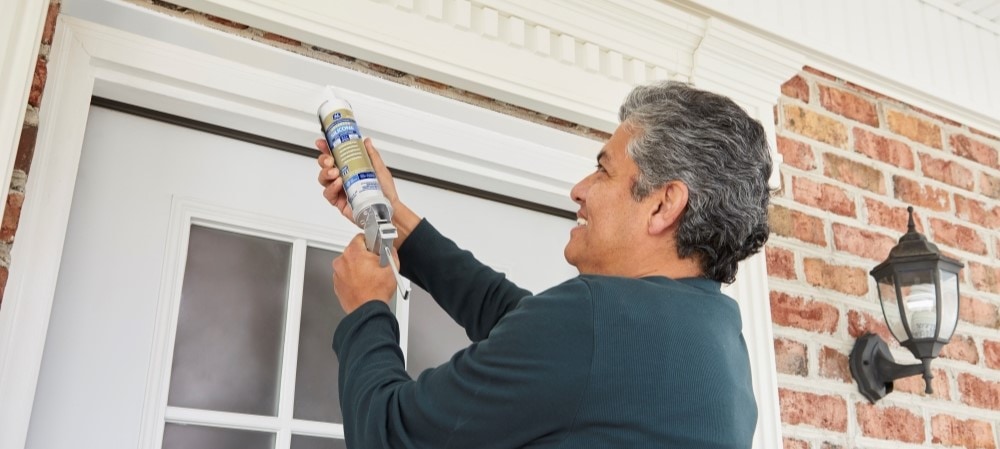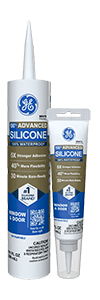Note: This DIY article is provided as a general guide only and is not intended to take the place of product-specific installation procedures; always follow applicable manufacturers’ instructions. Depending on your home’s age and condition, location within the home, and other potential factors, repairs and/or upgrades or other services may be necessary prior to the beginning and/or completion of your project that may involve the services of a home improvement professional. This article does not include advice pertaining to local building codes and/or any related inspections.
In home improvement and other DIY projects, understanding sealant dry times and curing times will help you achieve professional-grade results. This blog explains how long it takes for silicone sealant to dry and cure and highlights the distinction between the two processes. We will explore factors influencing these times and offer practical tips on how to make sealant dry faster. Equipped with this knowledge, you can avoid common pitfalls and ensure your projects are water-ready and fully cured.
Understanding sealant dry time
Sealant dry time refers to the period it takes for the outer layer of the sealant to become dry to the touch. For silicone sealants, the average dry time typically ranges from 30 minutes to an hour, depending on various factors.
-
Humidity and temperature:
The humidity and ambient temperature of the room play a significant role in determining how quickly the sealant dries. Higher humidity levels and warmer temperatures can accelerate the drying process, while lower humidity and cooler temperatures can slow it down.
-
Thickness of application:
The thickness of the sealant application also affects dry time. Naturally, a thicker layer will take longer to dry than a thinner one. It’s important to apply the sealant evenly to ensure a consistent drying process.
-
Ventilation:
Surrounding airflow is also important. Good ventilation can help the sealant dry faster by allowing moisture to escape more rapidly.
Understanding the dry time is essential for planning subsequent steps in your project. If you proceed too early, you risk disrupting the sealant’s adhesion and effectiveness. By considering these factors and allowing adequate drying time, you can achieve a durable and reliable seal.
Understanding sealant curing time
Sealant curing time refers to the period it takes for the sealant to fully harden and achieve its maximum strength and durability. Unlike dry time — which only addresses the surface layer — curing time involves the entire depth of the sealant. For silicone sealants, the curing process typically takes between 24 hours to 48 hours under optimal conditions.
The difference between dry time and curing time is important to note for several reasons. While the sealant may feel dry to the touch within an hour, it is not yet ready to withstand significant stress or exposure to moisture until it is fully cured. The curing process involves a chemical reaction that solidifies the sealant, creating long-term effectiveness.
Several factors influence curing time, including:
- Temperature
- Humidity
- Sealant thickness
Warmer temperatures and higher humidity levels generally speed up the curing process, while colder temperatures and low humidity can extend it. Additionally, a thicker application will take longer to cure fully.
“Sealant dries in distinct stages, each crucial for different applications. The first stage is touch-dry, where the surface of the sealant becomes dry to the touch, typically within 30 minutes to an hour for silicone sealants. At this stage, the sealant forms a skin but is not fully set.”
Stages of sealant drying
Sealant dries in distinct stages, each crucial for different applications. The first stage is touch-dry, where the surface of the sealant becomes dry to the touch, typically within 30 minutes to an hour for silicone sealants. At this stage, the sealant forms a skin but is not fully set.
The next stage is water-ready. This stage occurs when the sealant has dried sufficiently to resist water exposure without washing away or breaking adhesion. For most silicone sealants, water resistance happens within 24 hours.
The final stage is fully cured. This stage signifies that the sealant has completely hardened and achieved its maximum strength and durability. This process generally takes 24 to 48 hours. At this point, the sealant can withstand significant stress and exposure to moisture.
How to make sealant dry faster
Here are some practical tips to speed up the drying process:
-
Optimize temperature and humidity:
Applying sealant in a warm, humid environment can significantly reduce drying time. Aim for temperatures between 70-80°F (21-27°C) and maintain a humidity level above 50%.
-
Increase ventilation:
Good airflow helps moisture escape more quickly. Use fans or open windows to improve air circulation around the sealed area.
-
Apply thin layers:
Thinner applications of sealant dry faster. Apply multiple thin layers instead of one thick layer to reduce drying time.
-
Use a sealant accelerator:
Some sealants can be mixed with accelerators designed to speed up the curing process. Follow the manufacturer’s instructions for the best results.
-
Choose fast-drying sealants:
Some silicone sealants like Advanced Silicone 2® Window & Door Sealant are formulated for quicker drying times and are rain-ready in 30 minutes. Opt for these products when rapid drying is essential.
To find GE sealant products for your home improvement project, visit these fine retailers.



